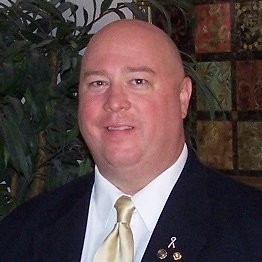Building a company culture that is engaging for people to join and work with is not a simple task. Ping pong tables, meditation rooms, free lunches, open work spaces, and open budgets for professional development are nice and have varying degrees of effectiveness, but for this post, the focus is on corporate mentor programs.
Corporate mentor programs are created to connect people on teams together for deeper relationships. When implemented properly, the results can lead to greater employee engagement, productivity, retention, and sense of pride in working for your company.
When not implemented properly, this can lead to people feeling like the mentor relationships are forced, the mentor relationships are taking time away from their typical work, and/or the mentor relationships are giving too much power the more senior participant.
There are 3 types of corporate mentor programs that have great intentions but unfortunately, more often than not, end up with results that are consistent with improperly implemented mentor programs.
Open Door Policy Mentorship
Open Door Policy Mentorship starts with companies that enact an open door policy to encourage employees to meet with each other. The goal is that when an employee would like guidance from another employee, she can feel comfortable going into the office of that other employee and ask for advice.
The reality is that most people don’t take advantage of this Open Door Policy Mentorship. Does this mean that the team isn’t interested in mentoring relationships? Possibly, but probably not (Current research indicates that employees are interested in mentoring relationships. If you are interested in finding out for yourself, you should ask your employees in a survey if they are interested).
So why don’t employees take advantage of this? Because most people don’t feel comfortable opening the door. Whether that be not knowing exactly what to talk about, fearing that what you have to ask isn’t relevant to what that person is working on right now or that you might be interrupting her day, or not feeling like the person would have a good answer for you even if you asked the question.
Ultimately, this type of mentor program becomes lip service for HR to say to prospective candidates to try and lure them to their company through the guise of a culture that cares about your development.
Mentorship from the Executive Team via an employee application process
This type of mentorship starts with the goal of spreading the culture of the company when it was small and only the Executive Team to the employees as the team has grown.
There are 3 issues with this type of mentorship.
First, the Executive Team doesn’t have the time to mentor every employee. This leads to:
Second, not everyone gets to participate. Trimming down the list of who gets selected to participate in this mentor program is typically accomplished through some form of application process. This leads to:
Third, the Executive Team member participant getting way too much control over the relationship. Mentorship should be mutual, where both participants come with insights to share and receive. When one participant has too much dominance over the relationship, they will typically come to mentor meetings unprepared expecting the other person to drive the agenda of the entire meeting. This leads to one-sided relationships where one person feels like they are only giving and not receiving anything (and can justify showing up unprepared because of their status in the company) and the other person doesn’t know what to ask because they don’t feel like they are contributing anything.
Informal Mentorship
Informal Mentorship is similar to Open Door Policy Mentorship but this is even less structured. At least in Open Door Policy Mentorship, there is a formal policy in place. Informal Mentorship is a term typically used by people in HR that have observed that some people in the office have more than the typical “How was your weekend?” or “How’s your day going?” conversations and assume that both people are having deep, connected conversations in which both people are learning and growing from the relationship.
None of the results from Informal Mentorship can be confirmed because there is no structure to establishing who is in these relationships and how these relationships have effected anyone’s engagement level in the company.
In conclusion, mentorship can be an extremely effective tool for engaging employees, growing company culture, and increasing productivity if done properly. But, if done improperly, it can lead to the opposite result.
If you are interested in learning more about research on mentor relationships for companies, check out ambition-in-motion.com/companies.










